Throughout its history Salisbury has received many visitors, some famous and some less well known. To many the Cathedral has been the attraction, to others Stonehenge, or perhaps it has been only a stop en route to another destination. Cities like individuals are not the same to all people. Each has character and yields only a small part of itself to the visitor, and it is fruitful to look back on the varied impression of some of the more noted visitors. For reasons of space their thoughts on the City itself can only be dealt with now, for their comments on the Cathedral would warrant another article.
Sometime about 1540, John Leland, the first English antiquary and chaplain to Henry VIII, came to Salisbury whilst carrying out a task entrusted to him by the King, which was searching for records and manuscripts in all the religious houses of England. He found many fair streets and was especially impressed with the High Street and Castle Street. Leland writes ‘that all the streets have little streamlets or arms derived from the River Avon running through them.’ The Market Place he thought fair and large, well served with meat, but even better served with fish, for according to him the greater part of the principal catch from the River Tamar at Plymouth found its way to Salisbury Market.
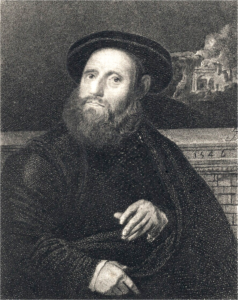 John Leland
John Leland
Just over a hundred years later in July, 1654, John Evelyn, the diarist, arrived in the City, and he was not so happy about the rivulets in the City for he writes ‘The Market Place with most of the streets are watered by a quick current and a pure stream running through the middle of them, but are negligently kept, where with a small charge they might be purged and rendered more agreeable, and made one of the sweetest of towns, but now the common buildings are despicable and the streets dirty.’
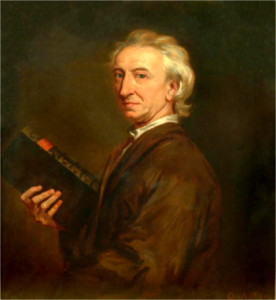 John Evelyn
John Evelyn
A few years pass and another and even more famous diarist appears in the streets of Salisbury, namely, Samuel Pepys. Perhaps the City Corporation had cleaned the streets up a bit since the visit of John Evelyn, for Pepys mentions the water running through every street but is silent on their tidiness or otherwise. Salisbury to Pepys was a very brave place with a most capacious Market Place. He stayed at the George Inn, in the High Street and enjoyed very good meals, but he considered the bill presented to him on his departure exorbitant, and resolved to speak to the Mistress about it.
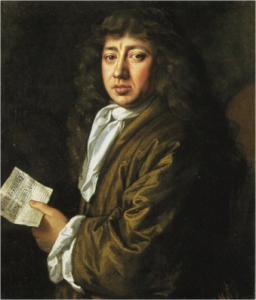 Samuel Pepys
Samuel Pepys
Celia Fiennes, a native of Newton Tony who deserves far greater attention than she has yet received, travelled extensively throughout England on horseback during the closing years of the 17th century and the beginning of the 18th century. To Celia the streets of Salisbury were pretty broad, but the little rivulets that ran through them were not as clean as they could be, and they made it difficult for her on horseback to pass through. True in her time there were steps over the rivulets, but she considered that they took much from the beauty of the streets. To Celia’s eyes Salisbury was well served with all provisions.
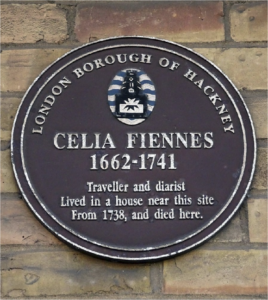
Some twenty years later Daniel Defoe famous as the author of ‘Robinson Crusoe’ but prominent in his own time as a Dissenter and Pamphleteer (which for his pains he was once put in the stocks) visited the City. Defoe thought Salisbury a large and pleasant City and considered that the water running through the streets contrary to the boasts of the inhabitants did not add to the beauty of the City, in fact he thought it had the opposite effect, for it kept the streets dirty and full of weeds and filth even in the midst of summer. Defoe was thus in agreement with our earlier visitor John Evelyn.
Defoe was impressed with the apparent prosperity of the City with its great variety of manufactures, unlike its neighbouring City of Winchester which was without any particular manufacture. He specially singled out two manufacturers which employed many workers, namely, fine flannels and long cloths for export to Turkey, called Salisbury Whites. He found the people gay and rich with a great deal of good manners that was not confined to the gentry alone but extended to the citizens too.
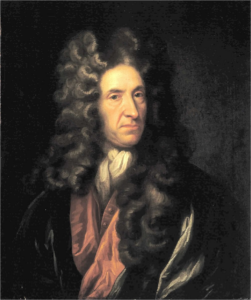
John Gay, the early 18th century poet who wrote ‘The Beggar’s Opera’ whilst staying at Amesbury, had this to say of Salisbury in his poem ‘A Journey to Exeter’.
Who can forsake your walls, and not admire
Your proud Cathedral, with its lofty spire?
What sempstress has not prov’d your scissors good?
And hence first came the intriguing riding hood.
Amidst three boarding schools, well stocked with misses,
Shall three knight-errant’s, starve for want of kisses.
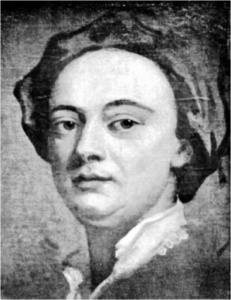 John Gay
John Gay
William Cobbett, that doughty champion of farm labourers visited Salisbury on numerous occasions, but had little to say about the City, although he was eloquent on the state of the fields and their crops and the condition of the workers in them. On one visit in October, 1822 he found time to address a company of over 500 farmers (according to his estimation) and surprisingly to Cobbett at least they listened very docilely when he warned them against squeezing the farm labourer. There had been a fire in a local farm-yard just prior to his visit and the subject was a ticklish one, but Cobbett, as always, spoke his mind, for, as he said he could not neglect his duty whatever the consequences.
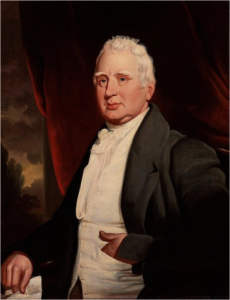 William Cobbett
William Cobbett
W.H. Hudson, the naturalist and author of ‘A Sheperd’s Life’ which gives an informative picture of life in South Wiltshire at the beginning of the 20th century derived much pleasure from looking down on Salisbury from Old Sarum. To him it was a City of beautiful aspect with buildings of red brick and tile. Salisbury he thought an extremely busy town humming with the talk of of the hosts of villagers from the surrounding countryside, and the Corn Exchange he liked to a huge beehive, full of brown faced farmers in their riding and driving cloths and leggings. And to Hudson Salisbury processed many pretty girls, more than could be counted.
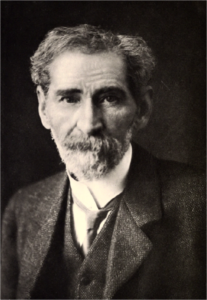 W.H. Hudson
W.H. Hudson
J.B. Priestley, the novelist and dramatist, in the autumn of 1933 was not in the least impressed with our fair City. True he only saw the Labour Exchange and the Market Place, and the former had outside its doors as pitiful a little crowd as ever he had seen.
In his 1950s book ‘The Hampshire Avon’ the writer and broadcaster Brian Vesey-Fitzgerald, mentions the old inns of charming frontage and cafes in medieval houses with beamed and wainscotted rooms. Many of our earlier visitors criticized the untidiness of the streamlets that used to flow through our streets and although they now belong to the past we still have the confluence of the five rivers, and it is encouraging that their clean and tidy state bring forth Mr. Fitzgerald’s admiration for, unlike many such rivers, they are not the last resting place of dead cats, old shoes and motor tyres.
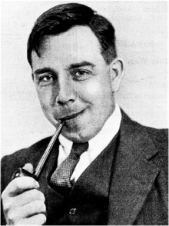 J.B. Priestley
J.B. Priestley